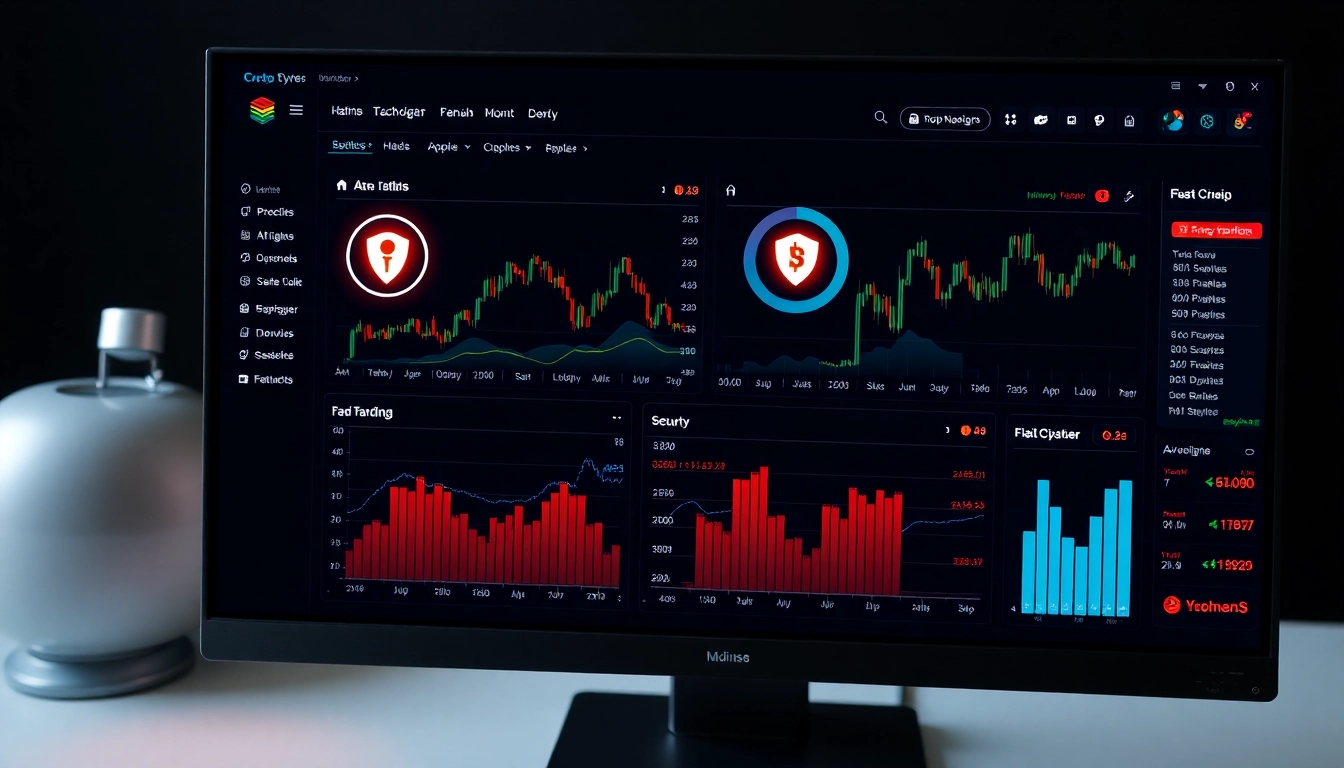
Understanding TRX Energy Rental and Its Role in Blockchain Ecosystems
In the rapidly evolving world of blockchain technology, efficiency and cost-effectiveness are paramount for users engaging with the TRON network. One innovative solution that has gained significant attention is trx energy rental. This service allows users to access the necessary computational resources for processing transactions without the need for extensive infrastructure or high upfront costs. By renting energy instead of staking or burning TRX tokens, participants can greatly optimize their operational costs, improve transaction speeds, and participate more flexibly in the blockchain ecosystem. Understanding how TRX energy rental functions, its benefits, and the right platforms to facilitate this process is essential for both individual users and enterprises seeking to leverage TRON’s capabilities efficiently.
What Is TRX Energy Rental and How Does It Work?
TRX energy rental refers to the process of temporarily obtaining computational resources on the TRON blockchain to facilitate transactions. Unlike staking, where tokens are locked for longer periods to support network security and earn rewards, energy rental is a service-oriented approach that provides immediate, usage-based access to energy resources. When executing smart contract transactions, token transfers, or deploying decentralized applications (dApps), the TRON network requires energy—an integral resource that validates and processes transactions. Since energy is a finite and sometimes costly resource, renting energy presents a flexible alternative to traditional methods.
The process involves selecting a trusted service platform—such as CatFee.IO—which operates independent TRON nodes and offers APIs supporting seamless energy rental. Users can purchase or lease energy for specific transactions, paying in TRX or USDT via TRC20 tokens, often through a straightforward, one-click interface. This immediate access to energy ensures transactions are processed swiftly, with verification visible on-chain, ensuring transparency and security.
The typical workflow includes selecting the desired energy amount, authorizing payment, and executing transactions with guaranteed on-chain verifiability. Self-built nodes or trusted API interfaces further streamline the process, making energy rental as simple as possible without sacrificing reliability.
Benefits of Renting Energy vs. Traditional Methods
Cost Savings and Flexibility
One of the most compelling advantages of TRX energy rental is the significant cost savings it offers. For users who only require occasional or moderate transaction throughput, renting energy eliminates the need for costly infrastructure investments such as running dedicated nodes or staking large amounts of TRX for extended periods. The flexible billing models adopted by providers like CatFee.IO allow users to rent energy tailored precisely to their transaction volume, reducing wasted resources and optimizing expenses.
Faster Transaction Processing
Using rented energy ensures that transactions are processed promptly, minimizing delays caused by network congestion or resource shortages. By accessing high-availability, enterprise-grade node services, users can enjoy low-latency, high-efficiency performance that meets enterprise standards.
On-Demand Availability and Instant Scalability
Traditional methods like staking require long-term commitments and locked-in tokens, which may not suit dynamic or experimental operational models. In contrast, energy rental provides instant scalability—users can quickly increase or decrease their energy supply dependent on their current needs, making it ideal for fluctuating transaction demands and rapid deployment scenarios.
Enhanced Security and Transparency
Reputable energy rental platforms such as CatFee.IO employ advanced security measures, including signature mechanisms and encryption protocols. Transactions and energy allocations are verifiable on-chain, offering full transparency. Furthermore, guaranteed refunds and dispute resolution mechanisms protect users from misdirected investments, ensuring a secure environment for blockchain participation.
Environmental and Resource Efficiency
Renting energy reduces the environmental footprint associated with maintaining dedicated nodes or staking tokens over long periods. It also ensures efficient use of blockchain resources, as energy is allocated based solely on transactional needs, fostering a sustainable blockchain ecosystem.
Choosing the Right TRX Energy Rental Platform
Security Measures and Transparency in TRON Energy Rentals
Ensuring the safety of your digital assets is paramount. Reliable platforms like CatFee.IO implement robust security mechanisms, including advanced signature verification, encrypted data transmission, and secure API integrations. Transparency is demonstrated through verifiable on-chain transactions, detailed resource logs, and real-time price updates accessible via official channels. Trustworthiness is further reinforced by third-party audits, positive user reviews, and official endorsements by projects like TronLink Wallet.
Pricing Structures and Cost Savings Opportunities
Industry leaders offer flexible pricing models designed to maximize value—offering pay-as-you-go plans, subscription-based services, or volume discounts. For example, CatFee.IO provides industry-leading prices with no compromises on quality, allowing users to access highly competitive rates for energy rental. Comparing these prices with other methods shows potential savings of up to 80%, especially when early volume-based discounts or special promotions are available. Utilizing real-time API integration simplifies cost monitoring and optimization.
Support and Customer Service Excellence
Prompt, professional support is crucial for efficient energy management. Premium services like CatFee.IO boast 24/7 technical support, comprehensive API documentation with multi-language examples, and user-friendly interfaces. Real-time assistance through official Telegram channels and custom bots ensures that any issues are swiftly resolved, maintaining uninterrupted transaction workflows.
Implementing TRX Energy Rental for Your Blockchain Transactions
Step-by-Step Guide to Renting TRX Energy
- Register and Connect Your Wallet: Select any compatible wallet such as TronLink Wallet and link it securely to the rental platform.
- Choose Your Energy Amount: Determine the required energy for your transaction, which can range from a few TRX to thousands, based on transaction complexity.
- Authorize Payment: Use TRC20-USDT or TRX to complete your purchase via supported API integrations. One-click TRX purchase and API support streamline this process.
- Confirm and Monitor: Confirm the transaction; real-time updates via official channels such as CatFee Telegram Bot keep you informed.
- Execute Your Transaction: Proceed with your blockchain operation, assured that the rented energy will support your success.
Integration with Wallets and APIs for Seamless Experience
Advanced platforms facilitate smooth integration with popular wallets and develop custom solutions through comprehensive REST APIs. Multi-language support and detailed API documentation enable developers to build custom energy bots or automate energy management, reducing manual oversight and speeding up deployment cycles.
Best Practices for Managing and Optimizing Energy Usage
- Regularly monitor transaction fees and energy consumption using official notifications and dashboards.
- Leverage API integrations to automate reordering or releasing of energy based on predefined thresholds.
- Explore multi-client strategies by utilizing self-built nodes or third-party services to round out your energy needs.
- Stay updated with platform announcements for new features, promotional discounts, or security updates.
Maximizing ROI with TRX Energy Rental
Using Energy Subleasing to Earn TRX
Energy subleasing offers an innovative avenue for earning passive income within the TRON ecosystem. If you have excess rented energy, you can sublease it to other users via dedicated platforms that facilitate peer-to-peer energy sharing. This not only optimizes utilization but can generate additional TRX income, especially during periods of low personal transaction volume. Platforms often support automated subleasing services through integrated APIs or custom bots, simplifying the process.
Monitoring Performance and Transaction Efficiency
Continuously tracking energy utilization, transaction success rates, and fee costs helps identify bottlenecks and opportunities for savings. Using dashboards and real-time notifications from official channels provide actionable insights, enabling more efficient resource allocation.
Cost-Benefit Analysis and Pricing Tips
To maximize ROI, compare costs across different providers and billing models. For instance, some platforms may offer discounted rates for bulk rentals or long-term commitments. Additionally, timing transactions during off-peak hours can reduce fees, while automation reduces operational overhead. Incorporating these strategies ensures that each energy rental yields the highest possible benefit.
Future Trends and Innovations in TRX Energy Rental
Upcoming Features and Platform Enhancements
The future of TRX energy rental includes innovations driven by blockchain advancements such as dynamic pricing models, AI-powered energy optimization, and integration with decentralized finance (DeFi). Platforms are working on adding features like predictive analytics to forecast energy demand, enabling users to rent preemptively at lower costs. Fully automated energy management solutions and cross-chain compatibility are expected to further streamline operations.
Integration with DeFi and Tokenized Assets
As DeFi matures, energy rental could evolve into a market where energy tokens or derivative assets are tradable, enabling new liquidity channels. Tokenized energy assets may allow fractional ownership or leasing, increasing accessibility and flexibility. This opens avenues for innovative funding models and diversified investment strategies within the blockchain space.
How Blockchain Security Advances Will Impact Energy Rentals
Continuous improvements in blockchain security, such as enhanced signature mechanisms, encryption, and multi-factor authentication, will bolster confidence in energy rental services. These advancements will mitigate risks like malicious attacks, misdirected transfers, or data breaches, ensuring a safer environment for all participants. As security becomes more robust, broader adoption and innovation within this domain are anticipated.






